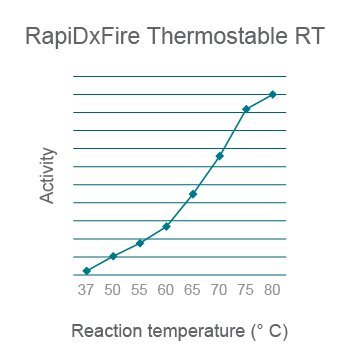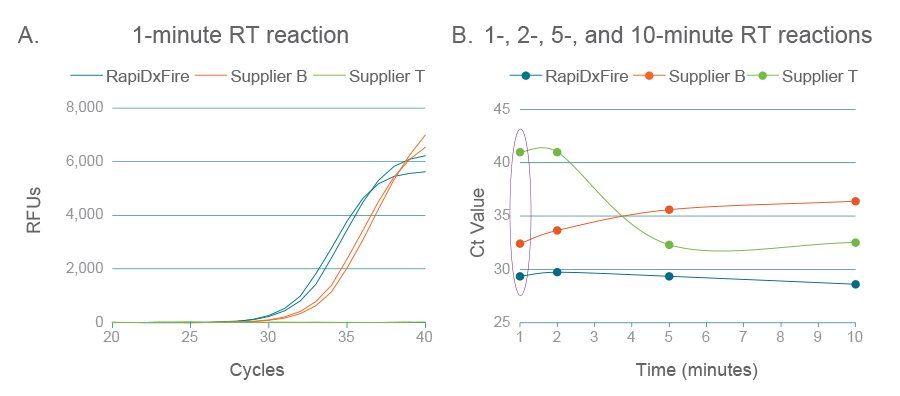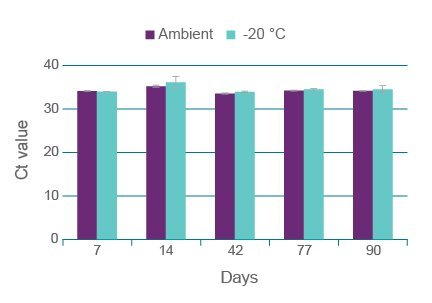New Site Launched: Looking for oligos? Visit our new oligo and Stellaris dedicated platform at
oligos.biosearchtech.com
RapiDxFire Thermostable Reverse Transcriptase
Product Details
ShowContents include RapiDxFire Thermostable Reverse Transcriptase (3 U/µL) and 10X RapiDxFire Reaction Buffer. The enzyme pack sizes (50 or 250 Rxns) are based on 25 µL reaction volumes.
You are currently seeing list prices, to see your prices please log in
RapiDxFire Thermostable Reverse Transcriptase
A truly thermostable reverse transcriptase for fast synthesis of short cDNA (< 1 Kb).
Key features
Show- Extremely active at high temperatures (55 °C to 80 °C): Improves specificity of cDNA Synthesis from diverse RNA templates
- Sensitive: Detects 100 copies of RNA in two-step RT-qPCR assays
- Short reaction time (5 minutes or less): Streamlined RT-qPCR workflow and faster time to results
- Stable at room temperature (> 3 months): Simplifies setup on automation decks (no cold storage required) and enables use in environments with limited cold-storage
- Lyo-compatible: Enzyme formulation is free of glycerol -and other components- that are known to interfere with downstream lyophilisation
- Batch to batch reproducibility: Manufactured in an ISO 13485-certified facility
Added to basket
Product information
- Storage: Store at -20 °C.
- Storage Buffer: RapiDxFire Thermostable RT is supplied in a glycerol-free, Triton X-100-free buffer.
- Unit Definition: One RT unit is defined as the amount of enzyme required to incorporate 1 nmol of dTTP into an acid-insoluble form in 10 minutes at 55 °C (using poly(rA) oligo(dT) as template primer and 1X kit -supplied buffer formulation).
- Functional QC Assay: RapiDxFire Thermostable RT is functionally tested with gene-° primer and bacteriophage MS2 RNA. In this reaction the enzyme converts 1000 copies of MS2 RNA into 520 bp cDNA in 5 minutes at 60 °C.
- Endonuclease: Free of contaminating endonucleases at the 10 Unit level.
- Exonuclease: Free of contaminating exonucleases at the 10 Unit level.
- RNase Activity: No RNase activity detected using a fluorescence-based RNase activity assay.
SDS
Manuals and user guides
FAQs
Access support
Need some support with placing an order, setting up an account, or finding the right protocol?
Contact us


